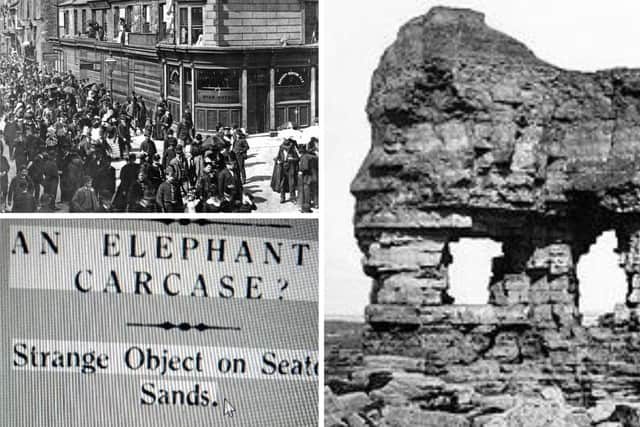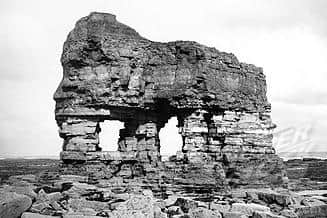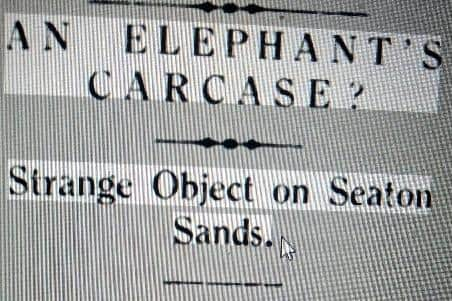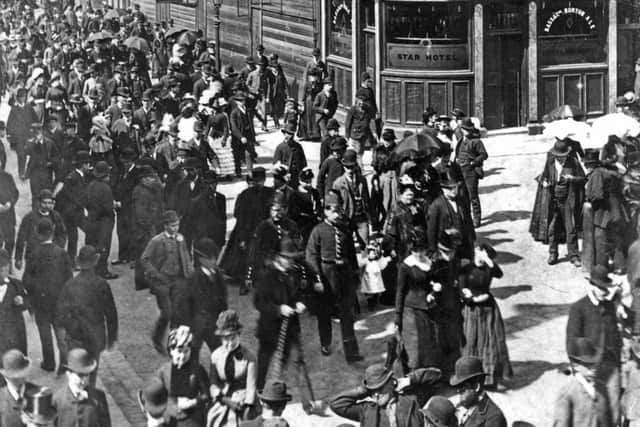Hartlepool's historic connections to elephants - from the famous rock to death on the streets
and live on Freeview channel 276
The rock which bore the name Elephant Rock toppled into the sea in the 1950s but did a real elephant die during a parade in town on the same day?
Historian Graeme Harper tells us more in his latest excellent contribution for the Hartlepool Mail.
Advertisement
Hide AdAdvertisement
Hide AdIt was a windy night in 1891 when Hartlepool’s coastline was changed forever.


Storms rolled in from the sea and toppled the Elephant Rock which had stood off the coast. But was it the only elephant to fall that day?
In February 1954, a Hartlepool Mail article included a claim by a reader who recalled a ‘‘wind beleaguered night when the waves thundered into the promenade walls like express trains.
"In town a travelling circus had just arrived and were setting up near the Palladium Cinema when without warning one of their elephants fell down dead.”
Advertisement
Hide AdAdvertisement
Hide AdDid a visiting elephant die at the same time as the rock crashed into the sea? There is nothing in the records to suggest that such a creature was in town that day but it is not impossible.


Elephants had been a popular part of visiting menageries and circuses in the town since at least 1850 and it did not always end well.
In December 1938, the Mail had printed a story about a Hartlepool couple who were celebrating their 60th wedding anniversary.
The man had spent years working on the railways and had also been the landlord of the Globe Hotel but his most vivid memory was the day an elephant’ dropped dead during a procession at Northgate. ‘Could this have been the same animal reputed to have collapsed alongside the
rock?


Advertisement
Hide AdAdvertisement
Hide AdIn 1850, Wombwell’s Menagerie – the most famous travelling animal show in the country - came to Hartlepool. After the show, an elephant caused havoc on the journey towards their next engagement in Seaham by breaking loose after becoming upset about having to pull the wagons.
The situation quickly escalated, and the angry elephant - all four tons of it – evaded recapture until it was eventually brought down by having ropes thrown round its legs.
The unnamed creature repeated the scene on the road the next day causing a panic that this would lead to other dangerous animals escaping. Such travelling exhibitions were health and safety nightmares with animals, workers and the public constantly in danger of death or injury.
When Wombwell’s exhibited in Hartlepool in 1851, a boy had a narrow escape when he stood too close to the lion’s cage with predictable consequences. Their 1891 North Eastern tour seems particularly eventful.


Advertisement
Hide AdAdvertisement
Hide AdA grizzly bear grabbed a young woman’s hair in Hartlepool, and a tiger escaped at on the way from Barnard Castle to Bishop Aukland causing havoc in Raby Park where it killed several deer and sheep.
One confirmed animal fatality was in 1858 during a return visit from Wombwell’s. Chubby, their 20 old, five tonne elephant, died as soon as the menagerie arrived.
Chubby had recently had a large tumour removed and was in extremely poor health so the death came as no surprise, although strenuous efforts were made to save it.
There is also the mysterious report of a decomposed elephant on Seaton beach in 1922, which was rumoured to be part of a shipwrecked menagerie, although supporting evidence for this scarce and it may have actually been the remains of a long-dead whale or shark.
Advertisement
Hide AdAdvertisement
Hide AdOn Christmas Eve 1878, there was an incident in Lynn Street during a procession of Wombwell’s menagerie. A trumpeting elephant so alarmed two horses that they bolted and fled towards Stranton, still pulling their wagons behind them, where they knocked over three passers-by, breaking one boy’s leg.
Circuses and theatrical shows could be equally as dangerous. In May 1890 a keeper was attacked by anbelephant at Sanger’s Circus which floored him with his trunk and lifted him towards its mouth before he was rescued by passing policeman Sgt Huntingdon.
In 1895, noted elephant trainer Professor Lockhart appeared at the Alhambra Palace of Varieties on Lynn Street. After the performance the animals were taken to a stable at the nearby Commercial Hotel.
Three elephants managed to escape and helped themselves to copious amounts of booze. One of the elephants -Boney – was said to have developed a taste for alcohol having been fed a bottle of gin by his trainer every Saturday.
Advertisement
Hide AdAdvertisement
Hide AdBoney was back in town again in April 1899 – and back on the bottle - as part of Lockhart’s ‘Marvellous Troupe of Comedy Elephants.’
The company’s advert proclaimed: ‘’ See Boney Elephant ride a bike. See Boney Elephant get drunk. See the Elephants play skittles. See the Elephants stand on their heads. ‘‘
In October 1947 elephants belonging to the Bertram Mills Circus, and holding each other trunk to tail, made their way to the railway station at 1.30 am to board the goods train en route to their next engagement.
Another parade occurred in June 1951 when a procession of baby elephants belonging to Billy Smarts Circus made their way towards Mill House.
Advertisement
Hide AdAdvertisement
Hide AdRecent changes in circus legislation mean that these fantastic creatures are unlikely to reappear.
However, at one point in times gone by, elephants might have roamed wild in the area. Fossilised bones were discovered in the Kirkdale Cave near Kirkbymoorside in 1821 and remains of their pachyderm cousins, the rhinoceros, have been found in Hartlepool.
But that’s another story.
